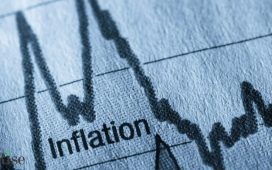The report followed a decision by Fed officials days earlier to hold interest rates at a 22-year high while Chair Jerome Powell dashed investors’ hopes of a March cut. Meanwhile, the Bank of England opened the door to lower rates.
Here are some of the charts that appeared on Bloomberg this week on the latest developments in the global economy:
World
 Bloomberg
BloombergOutside of the Fed and BOE, Sweden kept interest rates unchanged and said cuts could come in the first half of the year. A trio of Latin American central banks including Brazil delivering another round of hikes, and Ghana lower borrowing costs for the first time since 2021. Pakistan and Singapore stayed on hold, while Egypt unexpectedly raised rates.
 Bloomberg
BloombergThe International Monetary Fund raised its forecast for global growth this year on better-than-expected expansion in the US and fiscal stimulus in China, while warning of risks from wars and inflation. The world economy will grow 3.1% this year, up from 2.9% seen in October, according to the institution’s quarterly World Economic Outlook.US
 Bloomberg
BloombergUS employers boosted payrolls in January by 353,000, the most in a year, following a hefty upward revision to the prior month, suggesting a reacceleration that is likely to delay any Fed rate cuts for the time being.
 Bloomberg
BloombergA broad gauge of labor costs cooled by more than forecast in a fresh sign of easing inflation pressures that give Fed officials room to cut interest rates this year. The employment cost index, which measures wages and benefits, increased 0.9% in the fourth quarter, the smallest advance since 2021. Europe
 Bloomberg
BloombergThe BOE kept its key borrowing rate at 5.25% and dropped key guidance that it may have to hike again. The nine-member policy committee split three ways on what action to take, with a majority of six opting to hold the line. The decision marked the widest division on the direction of policy since 2008.
 Bloomberg
BloombergThe euro zone unexpectedly avoided a first recession since the pandemic in the latter half of 2023 as firmer growth in Italy and Spain offset the malaise in Germany. Gross domestic product stagnated in the last three months of the year — dodging a two-quarter downturn once again by the slimmest of margins. However, headwinds for the 20-nation bloc continue to linger, including elevated interest rates, flimsy foreign demand and heightened geopolitical tensions.
 Bloomberg
BloombergChina’s factory activity contracted again in January as a tepid improvement in foreign demand failed to outweigh the drag from poor domestic sentiment, dealing another blow to investors awaiting more signals on how the government will support the economy.
 Bloomberg
BloombergChina’s deflation pressures are likely to continue for at least another six months on weak demand and as the property crisis continues to sap confidence within the economy.
 Bloomberg
BloombergAustralian retail sales tumbled in December, erasing the bumper gain of the previous month when consumers brought forward spending to take advantage of discounts like Black Friday.
 Bloomberg
BloombergMexico’s economy downshifted more than forecast in the fourth quarter, as demand from the US, the country’s biggest trading partner, slowed along with household consumption.
 Bloomberg
BloombergEgypt raised interest rates for the first time since August, breaking expectations with a move that might speed up progress on a bigger rescue package with the International Monetary Fund and set the stage for another devaluation. The move is a surprise given a three-month slowdown in inflation and the strain that higher borrowing costs will place on public finances.











